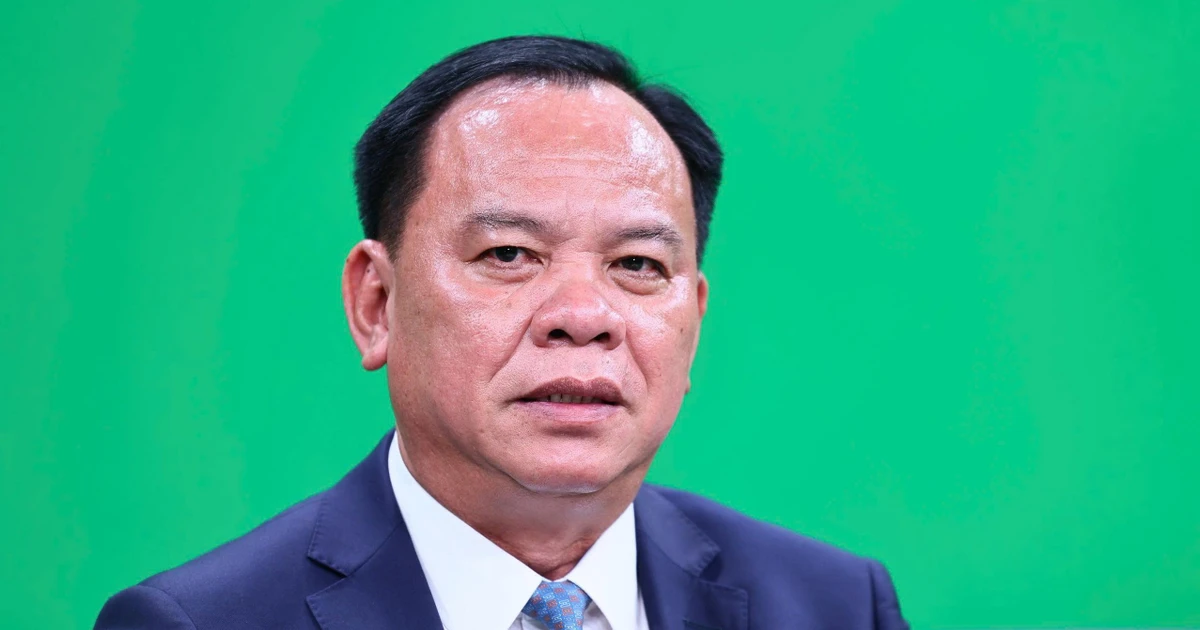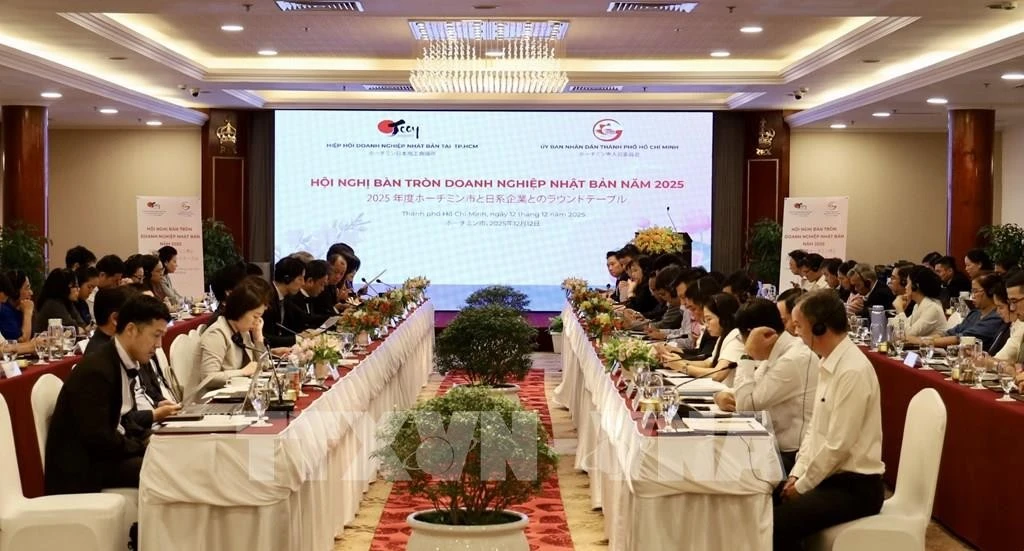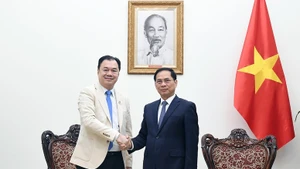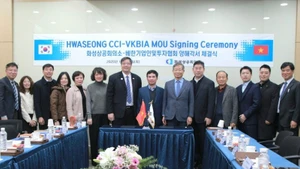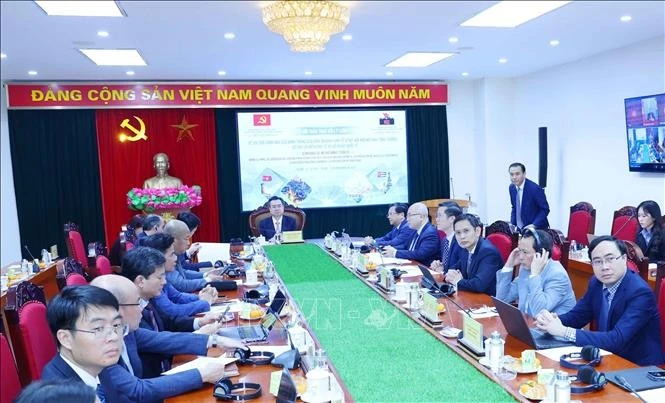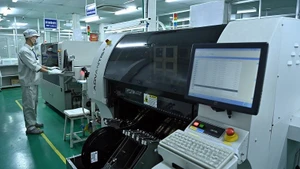On the eve of the 1st Congress of the Dong Nai Provincial Party Committee for the 2025–2030 tenure, a reporter from Nhan Dan Newspaper interviewed Vo Tan Duc, Deputy Secretary of the Provincial Party Committee and Chairman of the People’s Committee of Dong Nai Province, on this subject.
Transport infrastructure is the “golden link” for growth
Q: Sir, investment in strategic transport infrastructure has been one of the breakthrough fields prioritised by the Dong Nai Provincial Party Committee for leadership and direction, with the provincial authorities focusing on administration to create marked changes in recent times. How does this success contribute to the goal of double-digit economic growth that Dong Nai is aiming to achieve in 2025?
A: Investment in strategic transport infrastructure has been identified by the Executive Committee of the Dong Nai Provincial Party Committee as a breakthrough field, led and directed in an efficient manner.
In the 2020–2025 tenure, despite many difficulties from the Covid-19 pandemic and global economic volatility, under the leadership of the Provincial Party Committee and the People’s Committee, transport infrastructure in the province has seen strong and prominent development.
Dong Nai has achieved clear advances in developing transport infrastructure, especially key projects connecting Long Thanh Airport with the expressways. Specifically, regarding the multimodal transport system, the province possesses a convenient transport network with national arterial routes such as National Highway 1, National Highway 20, National Highway 51, and the north–south railway line, along with connections to Cai Mep–Thi Vai Port, Saigon Port, and Tan Son Nhat International Airport.
The province has completed many important provincial road projects such as the extended Route 319 and its interchange with the Ho Chi Minh City–Long Thanh–Dau Giay Expressway, the road to Phuoc An Port, the upgrade and expansion of Provincial Road DT 741, etc.
Key expressway projects passing through the province, such as Ho Chi Minh City–Long Thanh–Dau Giay and Dau Giay–Phan Thiet, have been completed and put into operation, creating a strong impetus for trade.
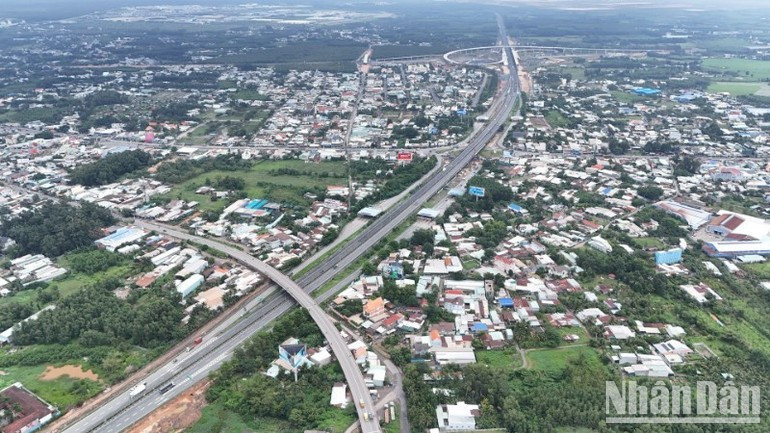
It is expected that by the end of 2025, Phase 1 of Long Thanh International Airport, the Bien Hoa–Vung Tau Expressway, and Ring Road 3–Ho Chi Minh City will be completed and brought into use. Recently, on August 19, Dong Nai Province commenced work on the Gia Nghia–Chon Thanh Expressway, the Dau Giay–Tan Phu Expressway, and the expansion of the Ho Chi Minh City–Long Thanh Expressway, and held the groundbreaking ceremony for the Ma Da Bridge project.
Success in investing in transport infrastructure, together with other strategic infrastructure, has been identified as a key factor in creating momentum for Dong Nai to achieve its target of 10% economic growth by the end of 2025 and in subsequent years.
Investment in strategic transport corridors, a dedicated railway system, and the application of smart technology in traffic management not only supports growth but also forms the foundation for striving to build Dong Nai into a green, prosperous, civilised, and modern province.
Q: In the time ahead, how will the province continue to focus on investing in transport infrastructure that connects synchronously with Long Thanh Airport and the expressways?
A: To accelerate the progress of projects connecting to Long Thanh Airport, the province is concentrating on the implementation of the Bien Hoa–Vung Tau Expressway, Ring Road 3–Ho Chi Minh City, and the north–south high-speed railway, all of which pass through the province. These projects are expected to create a solid foundation for multimodal connectivity, maximising the potential of Long Thanh International Airport.
Alongside the advantages, Dong Nai still has many challenges to address in the near future, notably the lack of synchronisation in inter-regional transport systems causing “bottlenecks”; pressure on connecting transport infrastructure when Long Thanh Airport comes into operation; and competition for investment attraction from neighbouring provinces.
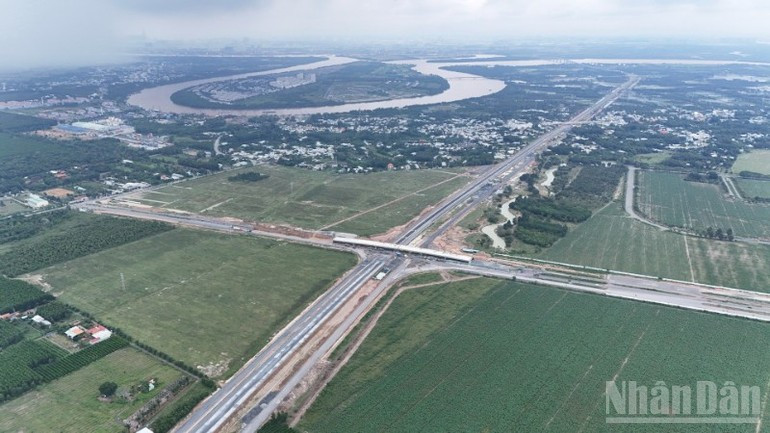
Therefore, Dong Nai continues to define strategic infrastructure development as one of the key breakthrough tasks, serving as the driving force leading growth.
For transport infrastructure, we are focusing on three strategic pillars: completing synchronous, modern infrastructure and enhancing multimodal connectivity; leveraging the special advantages of Long Thanh International Airport and the Hoa Lu Border Gate economic zone; and building a smart logistics network interconnecting road–rail–waterway–air transport modes.
To concretise these strategic pillars, we are focusing on core solutions.
Specifically, regarding the mobilisation of diverse resources, the province will proactively increase the proportion of public investment, aiming to allocate about 8–10% of GRDP to transport infrastructure development. At the same time, we will strongly attract investment under the public–private partnership (PPP) model for major high-spillover projects to ensure key works are implemented quickly and effectively.
We will strengthen synchronous and smart connectivity, prioritising investment in strategic transport corridors, a dedicated railway system, and the application of smart technologies in traffic and logistics management.
We will accelerate and complete expressway, ring-road, and railway projects connecting to Long Thanh Airport; invest in road routes connecting the Hoa Lu border-gate economic zone and the northern urban areas and industrial zones of the province with Long Thanh Airport, Phuoc An Port, and the southern urban areas; form logistics and high-quality commercial–service centres; and establish the strategic freight transport corridor of Long Thanh–Cai Mep–Hoa Lu–Tay Nguyen (Central Highlands).
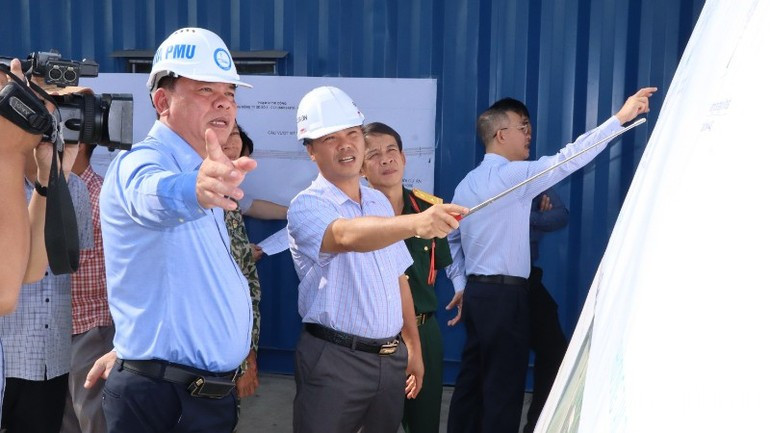
We will step up the disbursement of public investment capital and clarify decentralised responsibility; departments, sectors and localities are required to act urgently and decisively without delay, while enhancing the accountability of their leaders. The province will also promote decentralisation and delegation of powers and promptly resolve obstacles to ensure project progress.
Comprehensive efforts towards a breakthrough in Dong Nai
Q: Along with the evident momentum in transport infrastructure, a notable highlight is that Dong Nai has excelled in rising to third nationwide in the index measuring service to citizens and enterprises in handling administrative procedures and providing public services, which is highly significant for boosting the province’s economic growth. To achieve this result, what core solutions has the province implemented in recent times?
A: First of all, it can be affirmed that Dong Nai’s rise to third place nationwide in the index measuring service to citizens and enterprises in handling administrative procedures and providing public services — and leading the country in September 2025 — is an extremely important milestone.
This achievement reflects the great effort and very high political determination of the entire political system, especially the direct and resolute engagement of authorities at all levels. This is not only a common source of pride but also a powerful driver affirming that administrative reform has gone in depth, becoming a “strategic breakthrough” of the province in the current period.
In addition, this success has a direct impact on promoting the province’s economic growth, because a transparent, open administrative environment facilitates production and business.
It reduces the time and compliance costs of administrative procedures, creating the most favourable conditions for the business community and citizens. It enhances competitiveness in attracting new investment projects, particularly high-quality, high value-added projects, making an important contribution to achieving the double-digit growth target.
Dong Nai has excelled in rising to third place nationwide in the index measuring service to citizens and enterprises in handling administrative procedures and providing public services.
To achieve the above results, Dong Nai has implemented key solutions, particularly in tightening discipline and order in public-duty performance.
We have focused leadership and direction on the implementation of administrative reform. In the first nine months of 2025, the Provincial People’s Committee issued 72 documents directing the implementation of administrative reform; from July 1 to August 31 alone, 42 documents were issued, creating clear, comprehensive and effective changes in serving citizens and enterprises, especially after the provincial merger and the implementation of the two-tier local government model.
We have deployed many new models and solutions. At agencies and localities — especially public administration service centres — many new models and solutions have been flexibly applied to meet the growing needs of citizens and enterprises, such as the “not dependent on administrative boundaries” model; policies to reduce fees and charges when using online public services; the model of resolving administrative procedures without appointments; and the launch of a 30-day campaign to increase the rate of digitalisation of dossiers, online public services and online payments, etc.
In parallel with implementing innovative models, we have also paid special attention to tightening administrative discipline and order. Right from early 2025, the Provincial People’s Committee issued a plan and resolutely organised inspections and supervision of administrative reform and public-duty responsibility at agencies and localities; the focus has been on inspecting the responsibility for public-duty performance of officials, civil servants, and public employees in the process of receiving and resolving dossiers for citizens and enterprises.
Since July 1, 2025, after rearranging administrative units at provincial and commune levels and operating the two-tier local government model, the provincial administrative reform inspection team has conducted inspections at 20 agencies and localities. Through inspections, many shortcomings have been identified, and agencies and localities promptly requested to rectify and remedy them, thereby contributing to improving the effectiveness of public services.
These solutions have helped Dong Nai create a transparent and efficient investment and business environment, thereby laying an important foundation for the province to achieve sustainable economic growth.
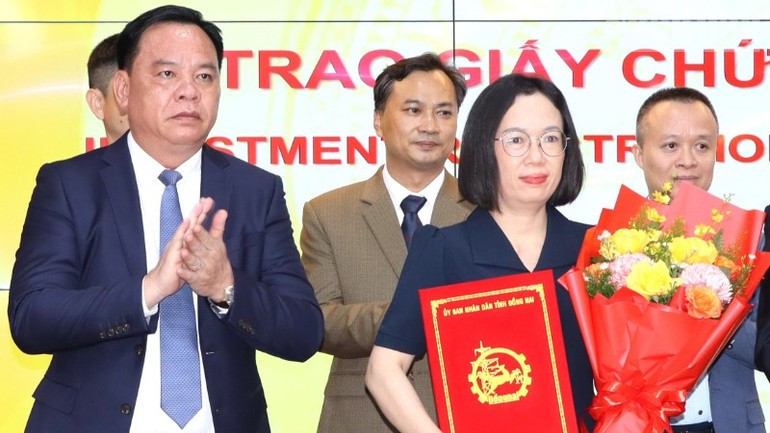
Q: The new territorial space of Dong Nai now possesses great room and advantages in many aspects to develop a fast, comprehensive and sustainable socio-economy. Could you tell us which main groups of solutions the province will delve into in its next steps to maximise resources, leverage outstanding potential, and further enhance the province’s distinctive competitiveness so that Dong Nai continues to maintain its position among the localities leading the national economy?
A: From July 1, 2025, Dong Nai Province officially came into operation on the basis of the merger of Dong Nai and Binh Phuoc provinces under Resolution No. 202/2025/QH15 of the National Assembly. Following the merger, the province has an area of 12,737 km², a population of more than 4.49 million people, and an economic scale of 609,176 billion VND, with 82 industrial parks planned over 36,728 ha. This is a major advantage, but it also poses an urgent requirement for a modern and synchronous infrastructure strategy to fully exploit potential and create development momentum.
Within the new development space, we have been selecting several main groups of solutions to maximise resources, leverage outstanding potential and enhance distinctive competitiveness, in order to maintain our position as a locality leading the national economy.
We will focus on completing strategic infrastructure, with emphasis on developing a multimodal transport network that synchronously connects arterial routes, airports and seaports. We will step up the mobilisation of capital from multiple sources, including the PPP model, to rapidly implement key projects and projects connecting to Long Thanh International Airport. In addition, the province also aims to allocate about 8–10% of GRDP for transport infrastructure development.
Two development drivers will be implemented: industry — attracting strategic, new-generation investors into industrial parks, prioritising high technology, green industries and supporting industries; and services — developing the integrated service urban area of Long Thanh International Airport with a logistics, commerce, tourism and finance ecosystem.
Party building and rectification will be intensified to build a clean, strong, streamlined, effective and efficient political system; make breakthroughs in administrative reform and digital transformation; and shift from a “reactive government” to a “serving and enabling government” for the people, with the aim to promptly resolve obstacles and ensure the smooth delivery of public services, thereby creating an open and transparent investment and business environment.
High-quality human resources will be developed; we identify this as one of the breakthrough programmes to improve the quality of human resources to meet the requirements of a modern economy. Focus will be placed on vocational training, especially in transport, logistics, infrastructure management, and transport technology, to ensure the effective operation of modern infrastructure systems.
The vigorous and synchronous implementation of these solutions is expected to help Dong Nai make the most of the “golden opportunity” and the “critical moment” to break through, achieve the goal of double-digit growth, and play its role as a nucleus driving and spreading development for the Southern Key Economic Region.
Q: Thank you very much!
